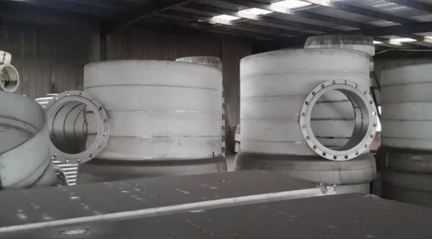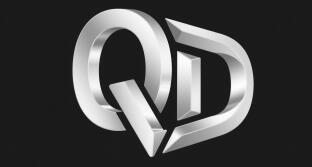If you need to produce a part with a complex structure and multiple internal cavities, traditional casting methods may present challenges like high mold costs and complicated processes. However, lost foam casting simplifies the production process.
QD has mastered the lost foam casting process. We are a professional casting foundry.
What is Lost Foam Casting?
Lost foam casting is also known as full mold casting. It is an advanced precision casting technology. Its core principle uses a foam plastic pattern that exactly matches the part shape. During pouring, the molten metal replaces the foam pattern and forms the casting.

This technology is widely used in automotive, machinery, art casting and other fields. It can significantly reduce production costs and cycle times.
Process Principle
The lost foam casting process can be divided into the following key steps:
| Step | Process Name | Detailed Description |
| 1 | Pattern Making | Use CNC cutting or foam molding technology to create a foam pattern identical to the part shape. Coat the pattern surface with refractory coating to enhance surface quality. |
| 2 | Assembly & Molding | Assemble foam patterns into clusters. Place them in a flask. Fill with dry sand and vibrate to compact. Ensure complete encapsulation of the patterns. |
| 3 | Pouring | Pour molten metal directly into the flask. Upon contact, the foam pattern vaporizes and is replaced by the metal. |
| 4 | Cooling & Cleaning | Allow the casting to cool. Remove it from the flask. Perform cleaning, remove coating/gating systems. Conduct necessary post-processing (e.g., sandblasting, machining). |
Key Technical Details:

Foam Material Selection: Typically use EPS or STMMA. STMMA suits higher-grade castings to reduce carbon defects.
Vaporization Process: The foam decomposes into gas under high heat. The gas escapes through the sand mold. This ensures the metal fills the mold cavity completely.
Sand Mold Usage: It eliminates the need for traditional sand cores. This simplifies the molding process. It reduces the risk of defects.
Major Benefits It Brings
Lost foam casting is gaining popularity across various industries because it offers significant advantages in multiple areas.
Design Freedom:
Traditional casting requires parting planes, which limit part geometry. Lost foam casting needs no parting planes. It allows designers to create highly complex internal cavities and external contours, such as thin walls, curved surfaces, and porous structures.

Reduced Assembly Steps:
By integrating multiple parts into a single casting, lost foam casting reduces subsequent assembly steps like welding and bolting. This improves structural integrity and reduces cumulative errors.
Cost and Time Savings:
- No need for complex sand cores or molds. This lowers tooling costs.
- The production cycle is shorter. It is suitable for small to medium batch orders.
- It reduces machining allowances. This saves material and machining costs.
High Precision and Surface Quality:
The foam pattern can precisely replicate the part shape. Castings have high dimensional accuracy and good surface finish. This reduces the need for subsequent finishing.
Environmental Benefits and High Material Utilization:
Dry sand can be reused. The foam material is recyclable. This reduces waste. It also achieves high metal utilization.
What is Lost Foam Casting Best Suited For?
Lost foam casting is particularly suitable for parts with complex structures, lightweight requirements, or those needing single-piece forming.

Engine Blocks and Cylinder Heads
They have complex internal water and oil passages. Traditional methods struggle with these, but lost foam allows single-piece casting.
Intake and Exhaust Manifolds
They feature complex curves and internal cavities. Lost foam ensures airflow efficiency and structural strength.
Machine Tool Beds and Frames
These are large castings. They require high rigidity and vibration damping. Lost foam provides design flexibility.
Large Art Castings
Such as sculptures and decorative pieces. It achieves fine details and unique shapes.
Pumps, Valves, and Hydraulic Components
They have complex internal flow channels. They require high sealing performance.
The following table compares the performance of lost foam casting and traditional sand casting in typical applications:
| Application Field | Lost Foam Casting Advantages | Traditional Sand Casting Limitations |
| Engine Blocks | Forms as one piece. Reduces leakage risks | Requires multiple sand cores. Complex assembly |
| Art Castings | High detail reproduction. Excellent surface finish | Parting lines create seams. Needs post-repair |
| Large Machinery Parts | Design freedom. Easy to achieve lightweight | High mold cost. Difficult to modify |
QD has successfully produced the above types of castings for many clients. We have accumulated extensive technical experience.
Lost Foam Casting vs. Other Casting Methods
To help you fully understand the competitiveness of lost foam casting, we compare it with several common casting methods:
| Casting Method | Suitable Part Complexity | Mold Cost | Production Cycle | Precision & Surface Quality |
| Lost Foam Casting | High (especially for internal cavities) | Low to Medium | Short | High |
| Sand Casting | Medium | Low | Medium | Medium |
| Investment Casting | High | High | Long | Very High |
| Die Casting | Medium | High | Short | High |
Lost foam casting achieves the best balance between complexity, cost, and efficiency. It is the ideal choice especially for parts with complex structures and small to medium batch production.
Why Choose QD?

QD has deeply focused on lost foam casting technology for many years and possesses the following core advantages:
Technical Team & Equipment: We have an experienced team of engineers and advanced fully automated production lines.
Customized Services: We provide one-stop solutions from pattern design to post-processing. We help clients optimize structures and reduce costs.
Quality Assurance: We implement strict inspection processes (like X-ray and dimensional checks). This ensures defect-free castings and stable performance.
Proven Track Record: We have supplied numerous complex castings to automotive, machinery, energy, and other industries. Client feedback is consistently positive.
With lost foam casting, your designs will no longer be limited by traditional processes. Whether for prototyping or volume production, QD will be your reliable partner. Please feel free to contact QD for your needs.
FAQ
1. How much does lost foam casting cost compared to traditional casting?
For complex parts, it can reduce mold costs by 30%-50% and lower post-processing expenses. Actual savings depend on part structure and order quantity.
2. What is the precision of lost foam casting?
Dimensional accuracy reaches CT7-CT9. Surface roughness achieves Ra 12.5-25μm. This meets most industrial requirements.
3. Which materials are suitable?
It works with common casting alloys like cast iron, cast steel, aluminum alloys, and copper alloys.
4. What is the production lead time?
The typical lead time from pattern making to delivery is 2-4 weeks. It shortens the cycle by 20%-30% compared to traditional methods.
5. What is the maximum casting size you can produce?
There is no strict theoretical upper limit. We have produced large machine tool beds weighing several tons. Specific feasibility depends on the part’s structure.
